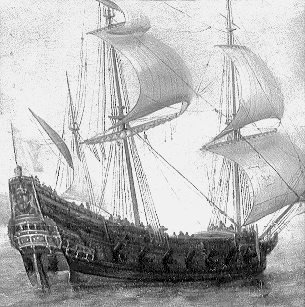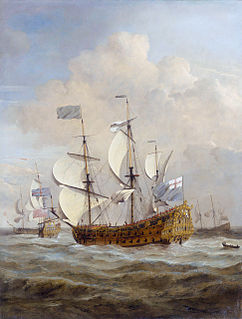
Peter Pett was an English Master Shipwright and Second Resident Commissioner of Chatham Dockyard. He protected his scale models and drawings of the King's Fleet during the Dutch Raid on the Medway, in Kent in June 1667, during the Second Anglo-Dutch War, which was otherwise disastrous to the British Royal Navy.

Phineas Pett was a shipwright and First Resident Commissioner of Chatham Dockyard and a member of the Pett dynasty. Phineas left a memoir of his activities which is preserved in the British Library and was published in 1918.
Mathew Baker (1530–1613) was one of the most renowned Tudor shipwrights, and the first to put the practice of shipbuilding down on paper.
At the time of Queen Elizabeth I, Richard Chapman was the owner of a private shipyard at Deptford, had the title of 'Queen's Master Shipwright,' and had been involved in the construction of river defences along the Thames, along with Peter Pett and Mathew Baker, two other important shipwrights of the time. Chapman was Master Shipwright of Woolwich and Deptford and built the first Ark Royal.

John Tilley and his family were passengers on the historic 1620 voyage of the Mayflower. He was a signatory to the Mayflower Compact, and died with his wife in the first Pilgrim winter in the New World.

Lyon's Whelp or Lion's Whelp is the name of a historical British ship, it is also found in the Bible in Genesis 49:9 “Judah is a lion’s whelp." Popular today, the name was given to a series of 16th-century naval ships, then in the 17th century to a fleet of ten full rigged pinnaces commissioned by the first Duke of Buckingham.

The Smalbroke family was a powerful landed gentry family between the early 15th and early 19th centuries, owning large areas of land in Birmingham, England.

Sir Anthony Deane FRS (1633–1721) was a 17th-century mayor of Harwich, naval architect, Master Shipwright and commercial shipbuilder, and Member of Parliament.
HMS President was a 34-gun fourth-rate of the English Navy, built by Peter Pett I at Deptford Dockyard and launched in 1650. She was incorporated into the Commonwealth Navy in 1650. She partook in the Battle off Dover and Kentish Knock in 1652, the Battle of Portland, the Gabbard and Scheveningen in 1653. She was renamed Bonaventure in 1660. After the Restoration she was incorporated into the Royal Navy. She was present at the Battle of Lowestoft (1665), the Four Days Battle and the Oxfordness in 1666. She was rebuilt in 1666. She was present at the Battle of Martinique in 1667, Battle of Solebay (1672), Battle of Schooneveld and Texel in 1673, the Battle of Beachy Head in 1690, the Battle of Barfleur 1692.

Deptford Dockyard was an important naval dockyard and base at Deptford on the River Thames, operated by the Royal Navy from the sixteenth to the nineteenth centuries. It built and maintained warships for 350 years, and many significant events and ships have been associated with it.
Reverend Walter Rosewell was the Vicar of Doulting, Somerset and later became a Presbyterian Minister at Chatham, Kent. He was sequestered and imprisoned in 1649 for refusing to take the oath of Engagement and for sedition.
Mary Lacy was a British sailor, shipwright and memoirist. She was arguably the first woman to have been given an exam and a pension from the British Admiralty as a shipwright.
Benjamin Rosewell (c.1665–1737) was a master shipwright at Harwich, Plymouth, Chatham and Sheerness Naval Dockyards, and Governor of Hawkins Hospital, Chatham.
Benjamin Rosewell was an attorney at Angel Court, Throgmorton Street, London.
Sir Henry Johnson was an English shipbuilder and politician who sat in the House of Commons in 1679. He was one of the leading commercial shipbuilders on the River Thames during the period of enormous mercantile expansion and the Dutch wars after the Restoration..
Peter Pett was an English master-shipwright at Deptford.
Sir Peter Pett was an English lawyer and author.
Pett is a village in East Sussex, England.

Adam Hayes (1710–1785) was an 18th century shipbuilder to the Royal Navy. A great number of his models survive.

Christopher Pett (1620–1668) was a 17th century English shipbuilder for the Royal Navy and part of the Pett dynasty of shipbuilders. He is mentioned in the Diary of Samuel Pepys.








